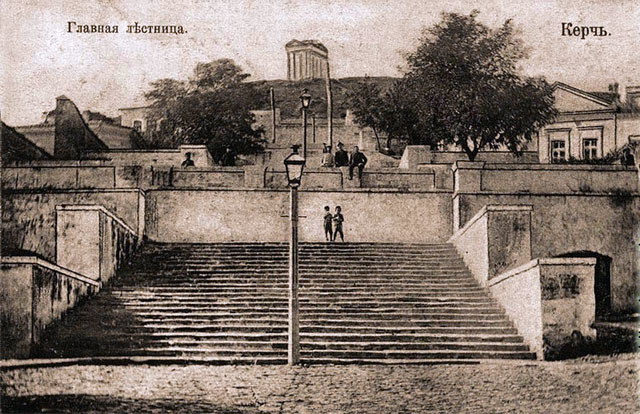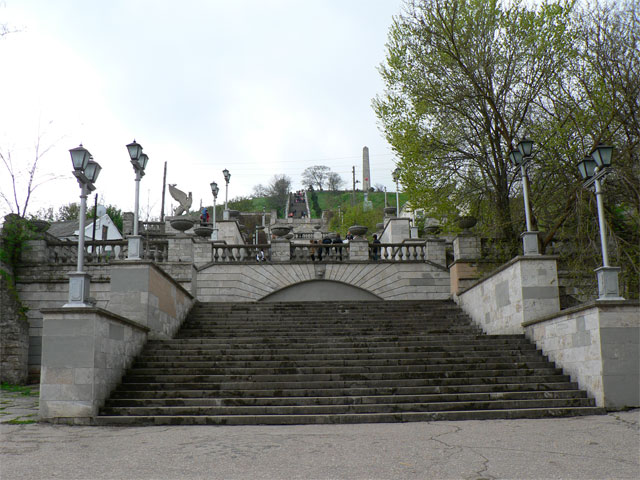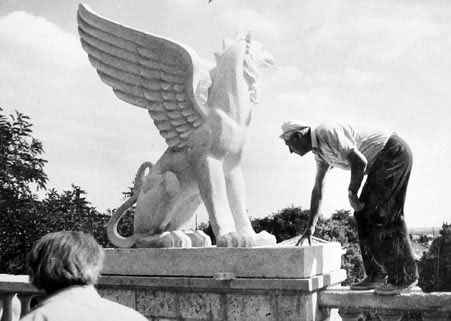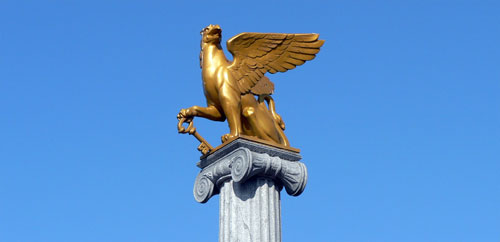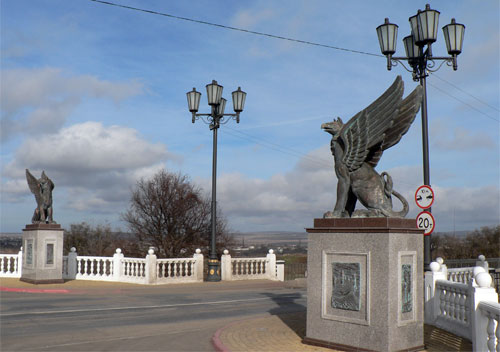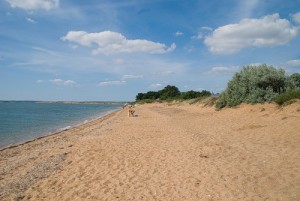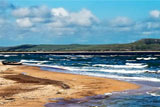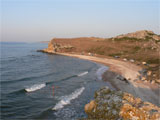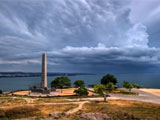The Main Square and the Big Mithridates Staircase. The city’s Main Square took shape during the 1830’s AD on the location of the destroyed Turkish fortress. The square was named after John the Baptist’s Temple. Later, the New Market was located there and became known as the real «belly» of Kerch. In the square, one could find cab parking and the city’s public garden, which appeared in 1895. Since the Soviet period, the main square (now, Lenin Square) has been the place for meetings, parades, and various city events. In 1932, a sculpture of V.I. Lenin, the leader of the Russian proletariat, which was designed by sculptor Y. Abalakov, was erected in the Main Square. Another one designed by V. Sytchov and architect A. Morozov later replaced this sculpture. Next to the square is the Mithridates Staircase, which erected during 1830’s — 1840’s by the architect A. Digbi. Two hundred fourteen steps led to the Kerch Museum of Antiquities. In 1944, some dozens of steps were added to get to the top of the Mithridates Mount, where the Obelisk of Glory was erected. Since 1985, there has been ongoing reconstruction and restoration of the Big Mithridates Staircase by the architect S. Kanyev.
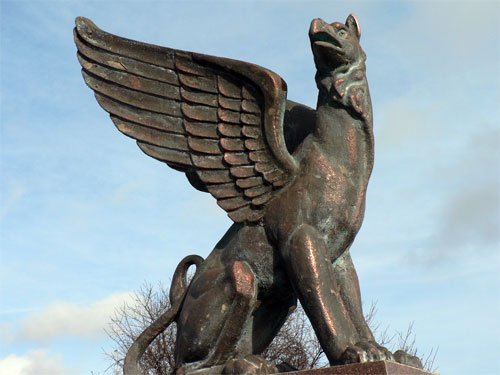
Kerch — the city of gryphons.
Due to the architects’ skills, antique and modern traditions have been successfully combined in Kerch’s architecture. The gryphons on the Mithridates staircase serve as just one example. The gryphon became the emblem of the city in the forth century ВС, and in during the 1830’s AD, two stone gryphons were placed on the Big Mithridates Staircase to guard peace in Kerch.
The sculptures were ruined with time and it was not until 1987, when new gryphons made of concrete, occupied their place again. In the 19th century, gryphons also decorated the entrance to the city at Shlagbaum Square, symbolizing Kerch as an exceptional and historically unique city. In autumn 1941, during World War II, the mythological beast-like birds were taken away as their presence made the mass evacuation from the Crimea conspicuous. The city was left without its symbol of security. Today, the gryphons not only decorate the Big Mithridates Staircase. The golden mythological creature with a key in its paws also rests on the top of the Memorial Column devoted to the city’s 2600th anniversary.
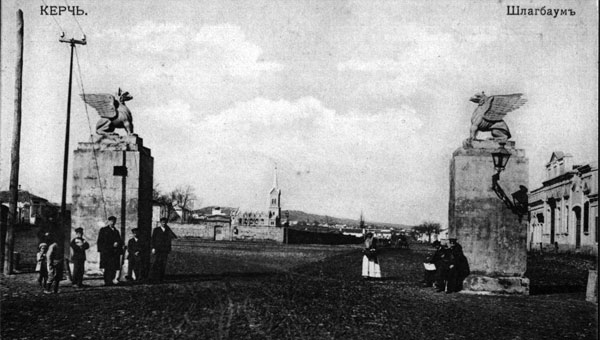
At the city gate
Once, to enter Kerch everyone had to pass through the city gate with a barrier and guards. The entrance to the city was decorated with gryphons on the top of high columns. Shlagbaum Street and Shlagbaum Square was a sort of a border between the city and the Russian-Tatar forstadt. The city’s citizens called the place «Shlambova» or «Eagles», and the Tatars named it «Coosh-Cape» or «the Birds’ Gate». From the gate there ran a street and in the middle of the street there was a park where people could stroll. Later, the street was named after the famous surgeon N. I. Pirogov. The city hospital, the handicraft school, and an institute for young ladies trained in noble etiquette (founded by the city governor Z.S. Kherkheulidze) were all located on this street. P.A. Dubrux, one of the founders of the Kerch Museum of Antiquities, and Yu.C. Terapiano (Toropiano), a famous Russian poet, writer, literary critic and publicist, lived on this street for some time. On Sh’lagbaum Square, there was a trade school (now school № 9 named after P.P. Shmidt) and the main city’s Orthodox Temple, the Cathedral of Holy Trinity. The Cathedral functioned until 1931 and was also the place where a famous priest named St. Luke (V.F. Voyno-Yasenetsky) was baptized.

